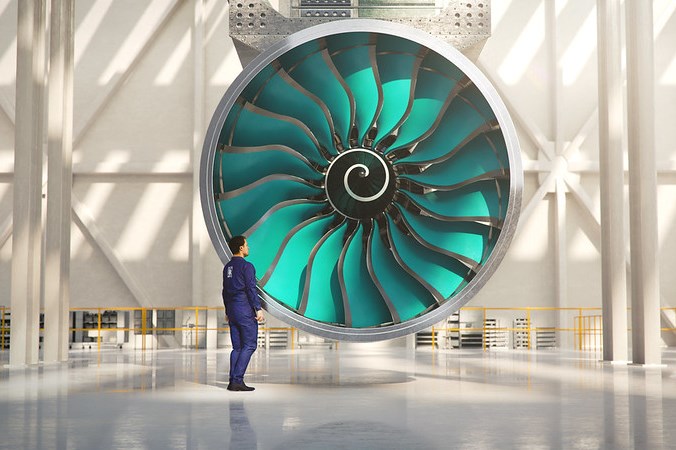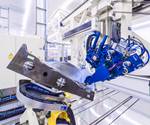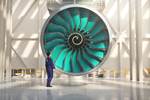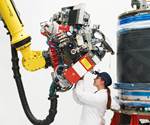Rolls-Royce begins building UltraFan aeroengine prototype
To be completed by the end of 2021, the UltraFan prototype includes the world’s largest fan rotor blades, which are made from composites.

Artist’s rendering of finished UltraFan engine prototype, to be completed by the end of 2021.
Photo Credit: Rolls-Royce
(London, U.K.) announced on March 29 that it has officially started building its first UltraFan prototype engine at its DemoWorks facility in Derby. U.K. with expectations to complete the prototype by the end of the year.
UltraFan, which the company says will be the world’s largest aero-engine and will contribute to sustainable air travel, features what will be the world’s largest fan rotor blades made from carbon fiber-reinforced polymer (CFRP). Rolls-Royce announced in 2020 that manufacture of the blades had begun at its Bristol, U.K. facility.
According to Rolls-Royce, the engine is the basis for a potential new family of UltraFan engines able to power both narrow-body and wide-body aircraft, and to deliver a 25% fuel efficiency improvement compared with the first generation of Trent engine.
This performance improvement, Rolls-Royce says, is crucial to achieving aviation sustainability, as UltraFan’s efficiency is expected to help improve the economics of an industry transition to more sustainable — and generally more expensive — fuels. The first test run of the engine will be conducted on 100% Sustainable Aviation Fuel, the company says.
In addition, UltraFan is part of Rolls-Royce’s IntelligentEngine vision. Each fan blade has a digital twin that stores real-life test data, allowing engineers to predict in-service performance. When on test at Rolls-Royce’s new £90-million Testbed 80 facility, data can reportedly be taken from more than 10,000 parameters, detecting the tiniest of vibrations at a rate of up to 200,000 samples per second.
Additonal key engineering features of the engine are said to include:
- Carbon titanium fan blades and a composite casing that reduce weight by up to 1,500 pounds per aircraft.
- Advanced ceramic matrix composite (CMC) components that operate more effectively in high pressure turbine temperatures.
- A new, proven, Advance 3 core architecture, combined with the company’s ALECSys lean burn combustion system, to deliver maximum fuel burn efficiency and low emissions.
- A geared design that delivers efficient power for the high-thrust, high bypass ratio engines of the future.
“This is an exciting moment for all of us at Rolls-Royce. Our first engine demonstrator, UF001, is now coming together and I’m really looking forward to seeing it built and ready for test. It is arriving at a time when the world is seeking ever more sustainable ways to travel in a post-COVID-19 world, and it makes me and all our team very proud to know we are part of the solution.,” says Chris Cholerton, Rolls-Royce, president of civil aerospace.
Investment in the UltraFan demonstrator development and associated technologies have been made by Rolls-Royce and funding agencies including the at Cranfield University (U.K.), and , LuFO (Germany), and the European Union’s Clean Sky Joint Undertaking.As engine build starts, other key parts are already coming together for delivery to Derby. Work is underway on UltraFan’s carbon titanium fan system in Bristol, UK, and its 50MW Power Gearbox, which is powerful enough to run 500 family cars, in Dahlewitz, Germany.
Related Content
-
A new era for ceramic matrix composites
CMC is expanding, with new fiber production in Europe, faster processes and higher temperature materials enabling applications for industry, hypersonics and New Space.
-
Hybrid process marries continuous, discontinuous composites design
9T Labs and Purdue applied Additive Fusion Technology to engineer a performance- and cost-competitive aircraft bin pin bracket made from compression-molded continuous and discontinuous CFRTP.
-
Plant tour: Collins Aerospace, Riverside, Calif., U.S. and Almere, Netherlands
Composite Tier 1’s long history, acquisition of stamped parts pioneer Dutch Thermoplastic Components, advances roadmap for growth in thermoplastic composite parts.
.jpg;width=70;height=70;mode=crop)





